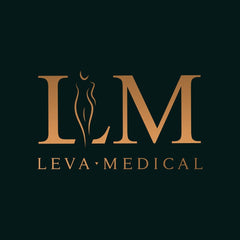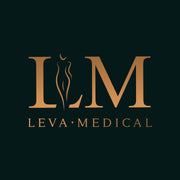Arm Liposuction
Invisible Arm Lift Surgery
No Scar Technique!
An arm lift, also known as brachioplasty, is a procedure designed to reshape the arms by removing unwanted hanging skin and excess arm fat. Whether caused by aging, weight loss, fluctuations, or genetics, sagging skin on the underside of the upper arm can be addressed through this surgery. While brachioplasty effectively addresses sagging skin, it is important to note that it may leave a scar. If you prefer a scar-free solution, our lipoplasty of the arms procedure may be the right option for you. Our compassionate team at Leva Medical in Queens, New York will provide personalized care to determine the ideal treatment plan for your desired look.
When you choose Leva Medical, you have access to a range of arm lift options tailored to your specific needs. Our team will thoroughly review your medical history, conduct a comprehensive examination of your arm tissues, and assess the quality and location of excess fat and skin. Based on these findings, we will present you with personalized treatment options, including our scar-free lipoplasty of the arms procedure, and explain the procedure that will yield the best results.
Arm Lift Procedure Variations
We offer several arm lift procedures to address varying levels of sagging skin and achieve the desired aesthetic outcome. These procedures include:
Liposuction:
Ideal for individuals with good skin elasticity, this procedure removes excess fat and allows the skin to shrink around the remaining tissue. Post-surgery, we provide assistance with skin tightening and recovery.
Lipoplasty Arms:

Liposuction and Renuvion (formerly known as J-Plasma) are two cosmetic procedures that can be performed to improve the appearance of the arms. While they are distinct techniques, they can be complementary when used together to achieve optimal results.
Liposuction, also known as lipoplasty, is a surgical procedure that aims to remove excess fat deposits from specific areas of the body, including the arms. During the procedure, a small incision is made near the targeted area, and a thin tube called a cannula is inserted. The cannula is connected to a suction device, and the surgeon carefully maneuvers it to break up and remove the unwanted fat cells.
Liposuction of the arms can effectively address issues such as stubborn fat pockets, disproportionate arm contours, and overall arm shape. It is important to note that liposuction is not a weight loss solution but rather a body contouring procedure. It is most suitable for individuals who are at or near their ideal body weight but have localized areas of excess fat.
Renuvion, on the other hand, is a minimally invasive procedure that utilizes a combination of helium gas and radiofrequency (RF) energy to tighten and rejuvenate the skin. It can be performed as a standalone procedure or in conjunction with liposuction. Renuvion works by delivering the RF energy through a thin wand-like device inserted through small incisions in the treatment area.
When used for arm rejuvenation, Renuvion helps to tighten the skin and improve its overall tone and texture. It stimulates collagen production, which is crucial for maintaining firm and youthful-looking skin. Renuvion is particularly beneficial for individuals who have experienced sagging or loose skin following significant weight loss, aging, or genetic factors.
By combining liposuction and Renuvion for arm contouring and rejuvenation, patients can achieve comprehensive results. Liposuction eliminates excess fat deposits, creating slimmer and more balanced arm contours. Renuvion complements the procedure by tightening and smoothing the skin, resulting in a more toned and youthful appearance.
It's worth noting that both liposuction and Renuvion are surgical procedures that require careful consideration and consultation with a qualified plastic surgeon. The surgeon will evaluate your specific concerns, overall health, and desired outcomes to determine if you are a suitable candidate for these procedures. They will also explain the potential risks, recovery process, and expected outcomes, allowing you to make an informed decision about whether these treatments are right for you.
Standard Brachioplasty:
This procedure involves complete removal of excess skin and fat from the arm, accounting for the amount, location, and elasticity of the skin. The incision runs from the armpit to just above the elbow.
Extended Brachioplasty:
Similar to the standard brachioplasty, this procedure addresses loose skin under the armpit and along the inner chest wall. The incision may extend from the elbow up the arm to the armpit or start in the armpit, run down the arm, and extend below the elbow onto the forearm. In some cases, a combination of both approaches may be used.
Varied Arm Lift Incisions
The length and pattern of incisions depend on the amount of fatty tissue and the location of excess skin and tissue to be removed. The incision types include:
- Liposuction Access Incisions: These tiny incisions are carefully hidden in the elbow and armpit creases.
- Minimal Incision: This incision is discreetly placed under the armpit.
- Inner Arm Incision: The incision is hidden along the length of the inner arm.
- Back of Arm Incision: This incision is concealed along the length of the side






